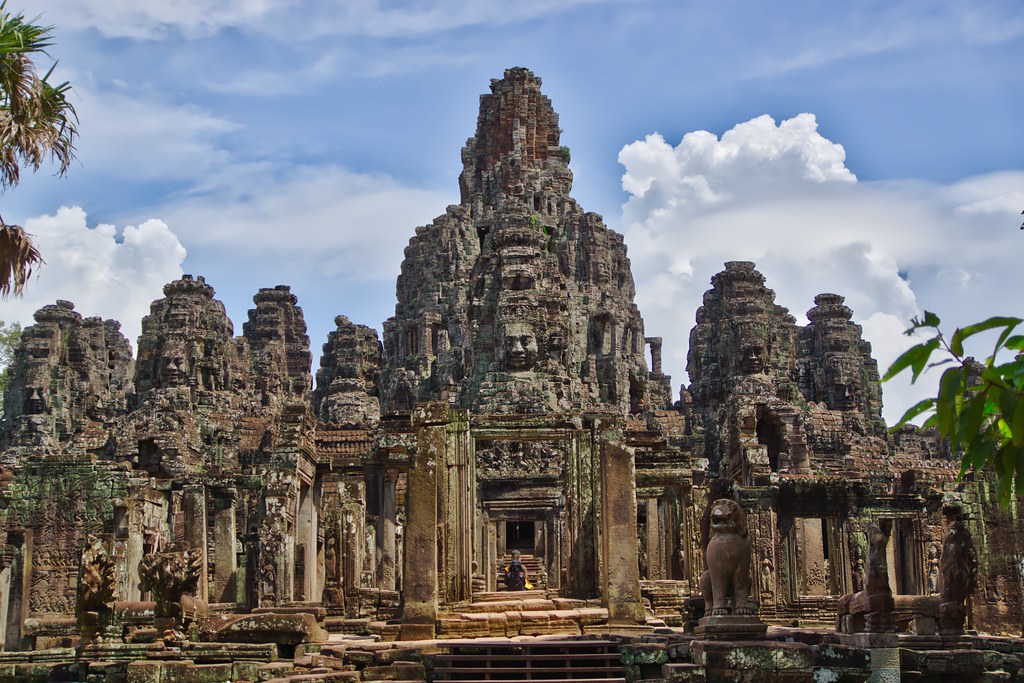Built at the late 12th century, The Bayon was the state temple of King Jayavarman VII, the great Buddhist ruler. The Bayon was sometimes called Jayavarman’s Temple in honor of the Khmer King. Originally intended to be a Mahayana Buddhist Temple, it was the last state temple built in the Angkor complex and was constructed to represent Mount Meru, the center of the universe in Hindu and Buddhist cosmology. From a distance, the Bayon seems like a rather formless jumble of stone without any impressive like the magnificent façade of Angkor Wat. Once get into the inner, you’ll find out the interior is a maze of galleries, towers, and passageways on the three different levels.
 Exploring the Bayon can be tough on your knees because there’re lots of narrow corridors and steep flights of stairs forming the construction of around 40 remaining towers, over 200 serene faces, and more than 11,000 figures of astonishing bas-relief carvings.
Exploring the Bayon can be tough on your knees because there’re lots of narrow corridors and steep flights of stairs forming the construction of around 40 remaining towers, over 200 serene faces, and more than 11,000 figures of astonishing bas-relief carvings.
The most distinctive feature that anyone visiting the temple remembers is the face of Lokeshvara, the Bodhisattva of compassion. Each tower has 4 faces, each face faces one of the cardinal directions of the compass and shows a serene smile with eyes closed, which indicates a state of inner peace and perhaps the state of Nirvana. It is thanks to these faces that the temple has not been demolished throughout history when Hindu kings mistook it for the face of Shiva.
 Scattering over 1.2 kilometers of exterior walls, the extraordinary collection of bas reliefs is gilded in an exquisitely sophisticated manner. Some of the bas reliefs are scenes from a sea battle between the Khmer and the Cham, while the others are extensive carvings of daily life including market scenes, religious rituals, cockfighting, chess games and childbirth.
Scattering over 1.2 kilometers of exterior walls, the extraordinary collection of bas reliefs is gilded in an exquisitely sophisticated manner. Some of the bas reliefs are scenes from a sea battle between the Khmer and the Cham, while the others are extensive carvings of daily life including market scenes, religious rituals, cockfighting, chess games and childbirth.
Visiting hours in Angkor National Park range from 7:30 am to 5:30 am but the Bayon is opened from 5:00 am to 5:30 pm, to make it possible for sunrise and sunset views.













